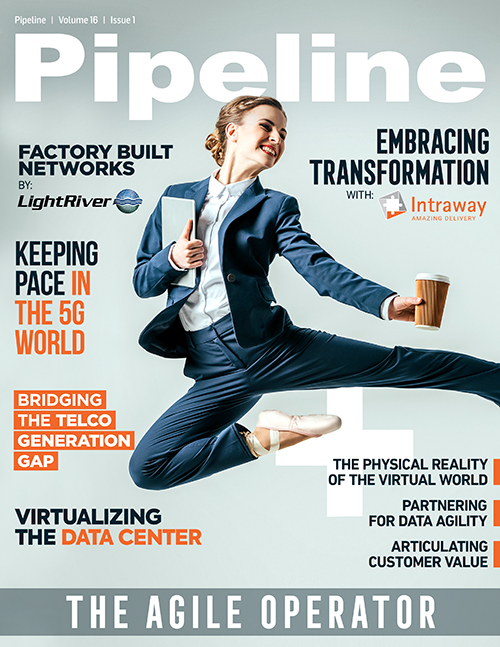Virtualizing Data Centers for Digital Transformation
By: Arun Shenoy
 An exponential increase in data is on the horizon. It’s coming from the advent of 5G networks, the increase in mobile computing, and the many connected people, places, and things that will come
online as the IoT continues to become mainstream.
An exponential increase in data is on the horizon. It’s coming from the advent of 5G networks, the increase in mobile computing, and the many connected people, places, and things that will come
online as the IoT continues to become mainstream.
Just how much of a data increase will we see? IDC forecasts that 175 zettabytes (ZB) of data will be produced by 2025—an uptick from just 33ZB last year—of which 90ZB will be created by IoT devices. That’s a 430 percent increase in just five and a half years—let that sink in for a moment.
As this tsunami of information arrives, data centers will play an increasingly vital role in data processing, storage, and management. Hence, it’s no surprise that, according to a report by Research and Markets, the global colocation data center market is expected to grow to $54.8 billion by 2020. That said, while our homes, buildings, streets, cars, manufacturing plants, financial services, healthcare and retail experiences are anticipated to become smarter and more connected, and every enterprise strives to undergo its own digital transformation to monetize these trends and technologies, the data center too must evolve.
Achieving cloud-like operations at the physical infrastructure level
From a technology perspective, the data center—especially its mechanical and electrical environment—just isn’t keeping pace with the IT environment. Meanwhile, enterprise CIOs and CTOs are attempting to transform their companies into organizations that invest less time and resources in the physical aspects of the data center and more into the business applications that can drive revenue growth and innovation across their product and service offerings. But lest we forget, 80 percent of enterprise IT still resides in owned and operated data centers.
Faced with these challenges, the objective of any progressive colocation provider is to enable its enterprise customers to leverage facilities that are more finely calibrated, monitored, reliable, and energy and cost-efficient than if they were left to their own devices. A more dynamic, flexible and efficient data center, whether on-prem or colo, moves the management of physical assets into the virtual world by platforming it in a private cloud—while providing transparency and control via a comprehensive online interface. These virtualized physical assets include space, power, cooling, and compute, as well as the existing assets of the enterprise.
It’s important to note that while the goal is to achieve cloud-like operations at the physical infrastructure level, the optimal solution isn’t simply about adding a data center management software layer. Data center infrastructure resource management was never that simple, and with the continuing proliferation of Artificial Intelligence (AI) and machine learning (ML) tools, and the medley of different monitoring systems, sensors, device alerts, and dashboards, it’s only likely to become more complex.





















